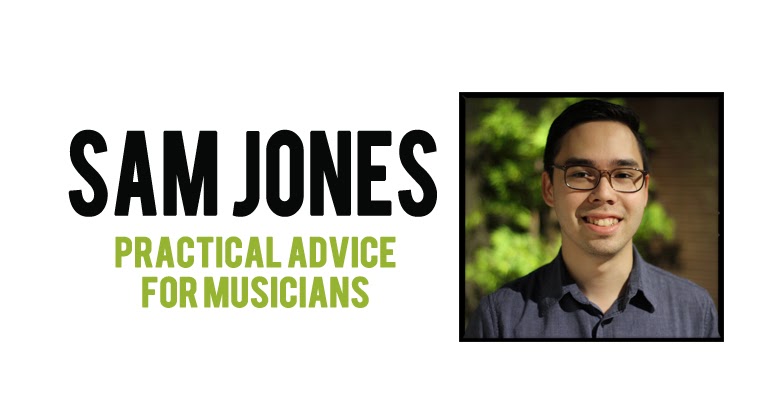Back here again and sorry it's been so long!
Last time, I spoke briefly about using loops and Ableton Live in worship. Obviously, loops are not very everyone, but I tried to list some pros and cons for those who are considering utilizing them in church.
Today, I want to share how I typically set up my Ableton sessions and also discuss additional reasons why I like using it for worship.
My Ableton Live Set-Up
My Ableton Live Set-Up
Below is a picture of how I typically run a set for Sunday. As you can see, for live purposes I stick the "session" view and have all each song named on the left in an empty midi track.
For "Hosanna" I have both keys and drum loops programmed to the exact roadmap of the song. I also have a count-in track that's in channel 6 that will allow the band to start together and start with the loop. Each scene that I trigger is horizontal, so when I trigger the beginning of "Hosanna" the shaker starts (we use this for in-ear click) and when I trigger the next scene "Loop_Keys" and "Loop_Drum" also start. (I have the same for "Lord I Need You")
Depending on the song and the amount of flexibility I want, I can also have loops for different sections of a song (verse, chorus, bridge) rather than one file that follows a specific roadmap. Obviously while leading it can be tricky to trigger the next loop, but for an open ended roadmap (say we want to sing an additional chorus or go back to the bridge again) this can be very helpful.
An even more open ended way of using loops is what I have for "From the Inside Out" this Sunday. Instead of specific tracks programmed for a particular arrangement, I just have ambient pads that run throughout the song that provide a harmonic foundation and also help us transition smoothly out of "Lord I Need You". I typically keep a collection of generic pads and percussion loops that can be utilized and modified for any song. Ableton allows for easy tempo sync and also is able to transpose tracks to a certain degree.
Once I have everything in it's right place as far as tracks, tempos and cues go, I can program my midi controller for live triggering.
Typically, I use the KMI Soft Step controller (as pictured above) for trigging loops hands-free. I'll have it set up so that button 1 starts the click for the song we're about to play and button 2 starts the count-in and loop for the entire song (or first section of the song depending on the loop). At HFBC, we usually play an opening set, a middle set and a response song, so I'll generally switch banks for each set (using the right arrow on the right side of the controller). Having a bank for each set we play allows me to quickly transition between songs and loops.
Other Pros of Using Ableton
If I'm playing keys and running loops, Ableton can serve as a host for VSTs (Virtual Studio Technology). It's nice to be able to have everything controllable in a single window (I enjoy Omnisphere, Reason, and Kontact) and also to be able to sync rhythmic patches to tempo.
Speaking of tempo, I've also used Ableton for midi clock sync with guitar pedals (especially delays), as this saves time from having to tap in tempos every song. I do this by running a midi cable from the midi out of my audio interface (connected to my laptop and used as the audio driver for Ableton) to the midi input of the pedal.
Speaking of tempo, I've also used Ableton for midi clock sync with guitar pedals (especially delays), as this saves time from having to tap in tempos every song. I do this by running a midi cable from the midi out of my audio interface (connected to my laptop and used as the audio driver for Ableton) to the midi input of the pedal.
Lastly, Ableton 8 has the ability to trigger videos and lyric slides in Pro Presenter (using midi over wifi) and also DMX lighting control. Both of these are becoming easier to do and can be beneficial for multi-media sync.
---
Obviously, this is a very simplified, brief overview of how Ableton can be used in a worship band setting.
As always, it's helpful to think through each song/transition and be prepared to use the loops in a way that would be most conducive to leading others into worship.
Like any new instrument or technology, it took some practice and preparation to use it with fluency in a live setting.
I hope that this has been helpful for you all and please refer to http://loopcommunity.com/training for more in depth information and resources.
---
Obviously, this is a very simplified, brief overview of how Ableton can be used in a worship band setting.
As always, it's helpful to think through each song/transition and be prepared to use the loops in a way that would be most conducive to leading others into worship.
Like any new instrument or technology, it took some practice and preparation to use it with fluency in a live setting.
I hope that this has been helpful for you all and please refer to http://loopcommunity.com/training for more in depth information and resources.














